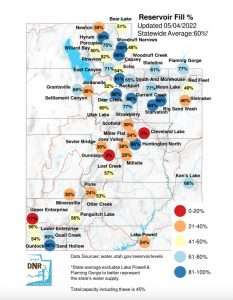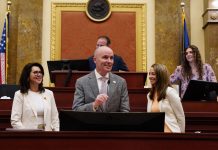
SALT LAKE CITY, Utah, May 5, 2022 (Gephardt Daily) — State water officials say drought conditions continue to stress Utah’s national resources and could make for a challenging wildfire season.
Roughly 99% of Utah is experiencing “extreme” or “severe” drought conditions, the second- and third-worst categories in the U.S. Drought Monitor, the Utah Division of Water Resources announced Thursday.
The state’s reservoir levels also are 10% lower than they were at this time last year, state officials said.
“Our lands are tinder dry, and with May and June forecasted to be hotter and drier than previous years, we are also gearing up for a challenging wildfire season,” Brian Steed, executive director of the Department of Natural Resources, said in a news release.
“We need people to continue to conserve to stretch our limited water supply and exercise good Fire Sense to reduce the risk of human-caused wildfires,” Steed said.
The state’s Fire Sense campaign encourages Utahns to use good judgement in the outdoors to prevent human-caused wildfires.
There have been 97 wildfires in Utah so far this year, consuming approximately 256 acres, according to the Utah Division of Water Resources report. Of those wildfires, 88 have been human-caused, the report states.

Other highlights from the Division of Water Resources drought report Thursday:
-
The statewide snow water equivalent, or how much water would be in the snowpack if it melted, peaked at 12 inches. This is 75% of the typical median peak of 16 inches.
- Of the 96 measured streams, 56 are flowing below normal despite spring runoff, with five streams flowing at record-low conditions. Due to low snowpack, streamflows are expected to be lower than normal, meaning reservoirs won’t fill as they normally would.
-
Twenty-two of Utah’s largest 45 reservoirs are below 55% of available capacity. Overall statewide storage is 60% of capacity. At this time last year, reservoirs were about 67% of capacity.
Also Thursday, Gov. Spencer Cox and U.S. Secretary of Agriculture Tom Vilsack signed a Shared Stewardship agreement at the Utah Capitol, reaffirming the commitment to protect Utah forests and communities from catastrophic wildfires.
In April, Cox declared a state of emergency due to the dire drought conditions affecting the state. Utah has experienced drought conditions in eight of the past 10 years, according to the governor’s office.






